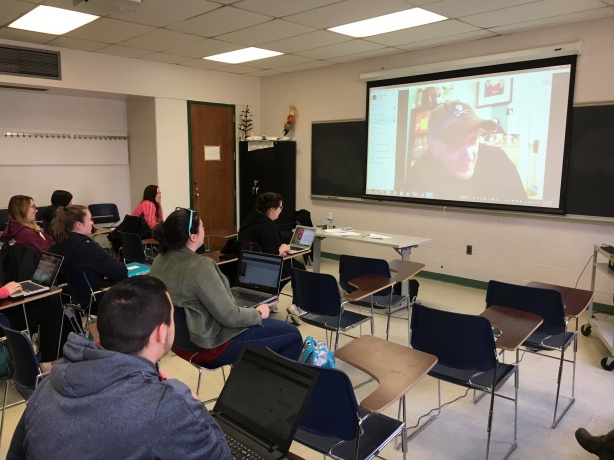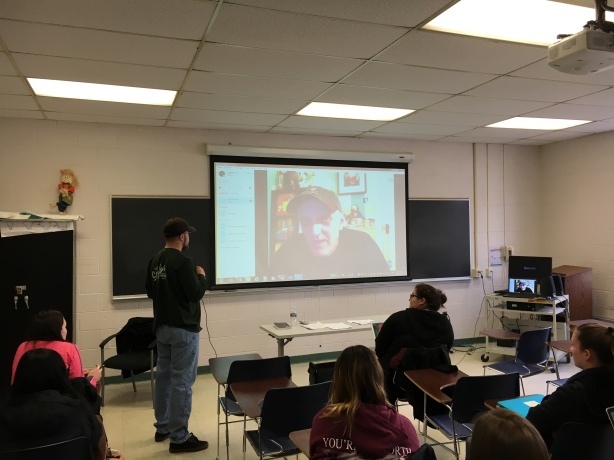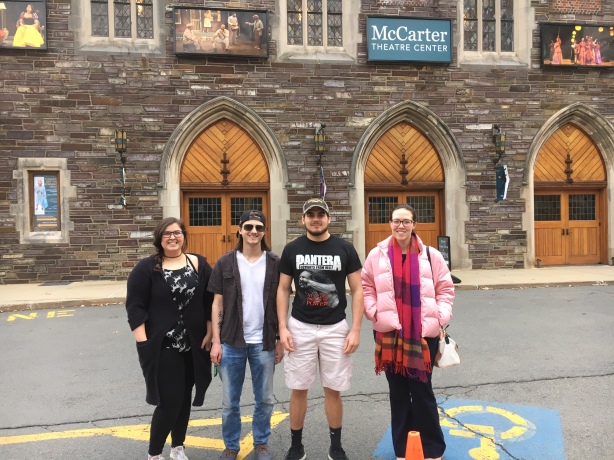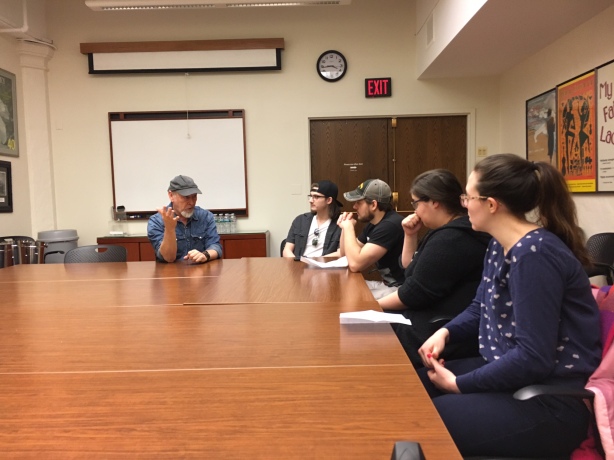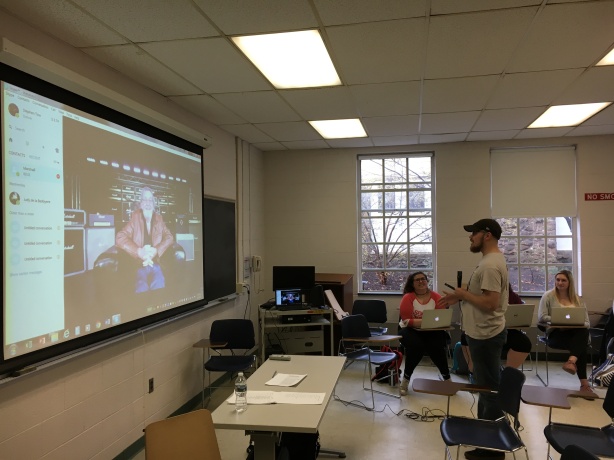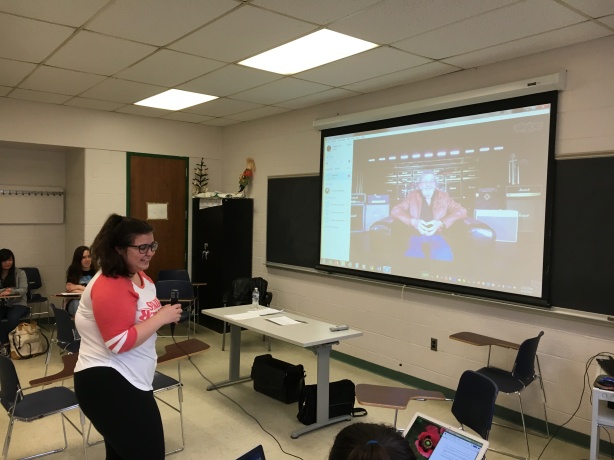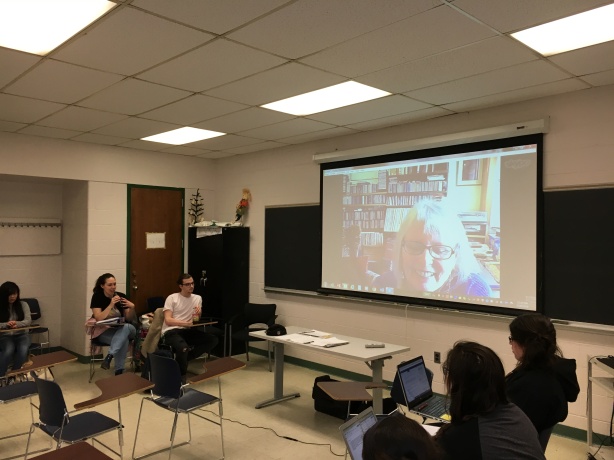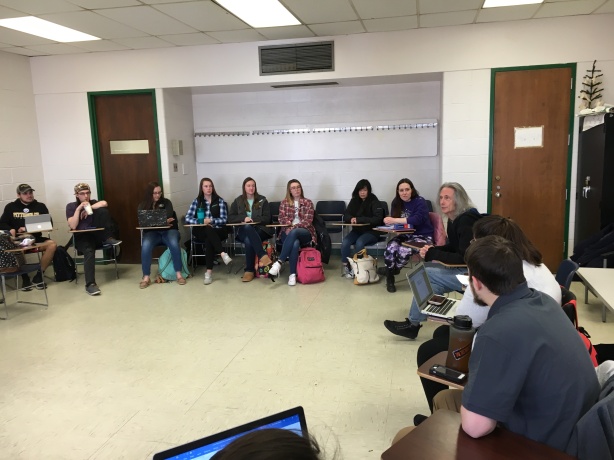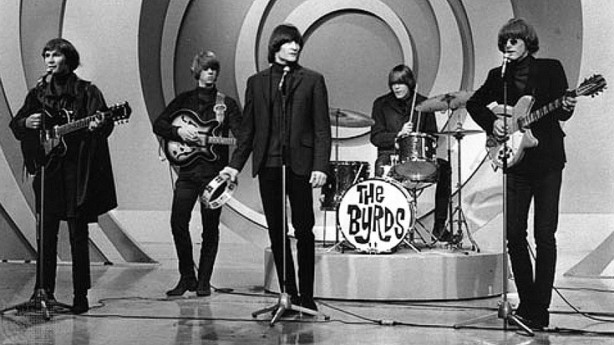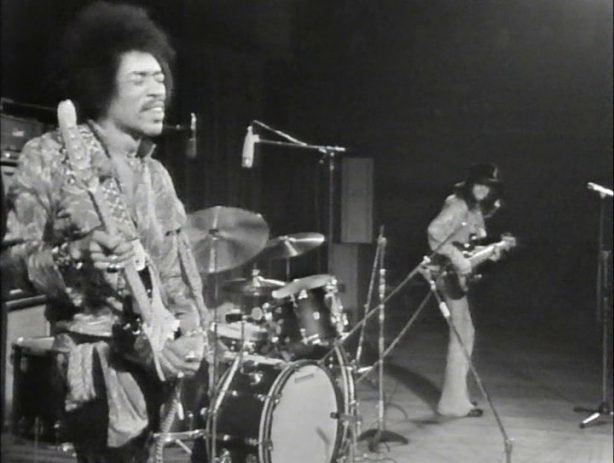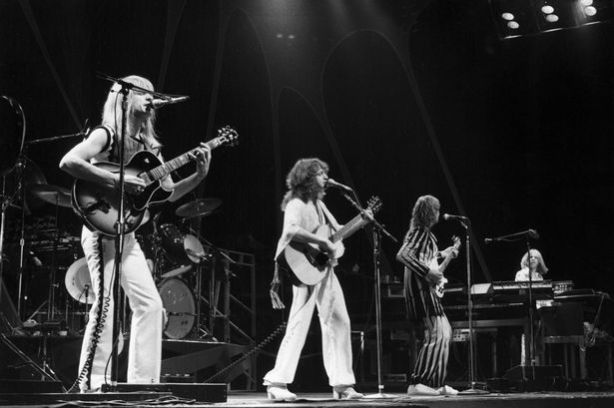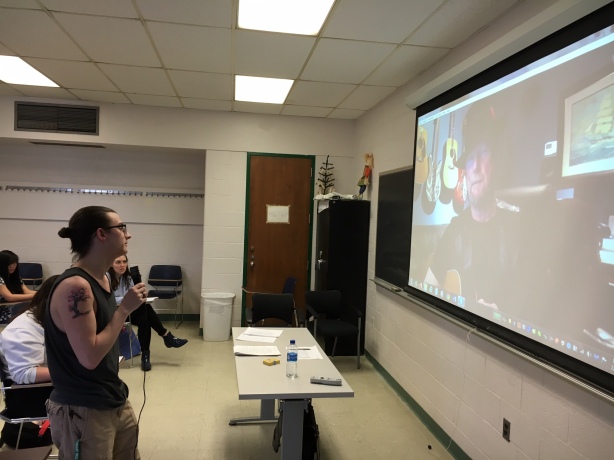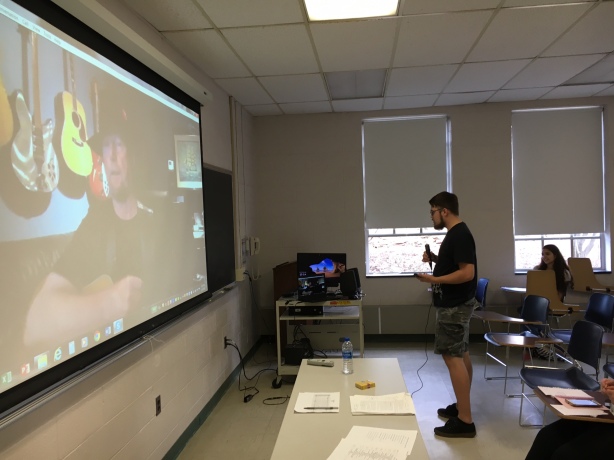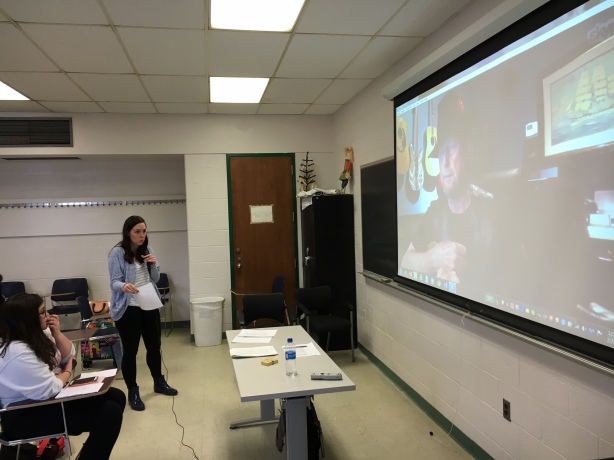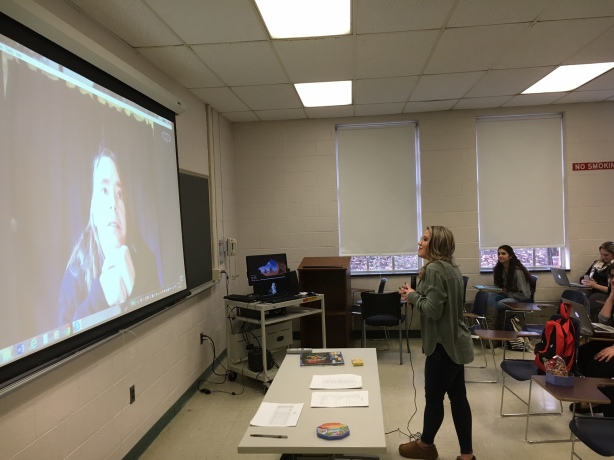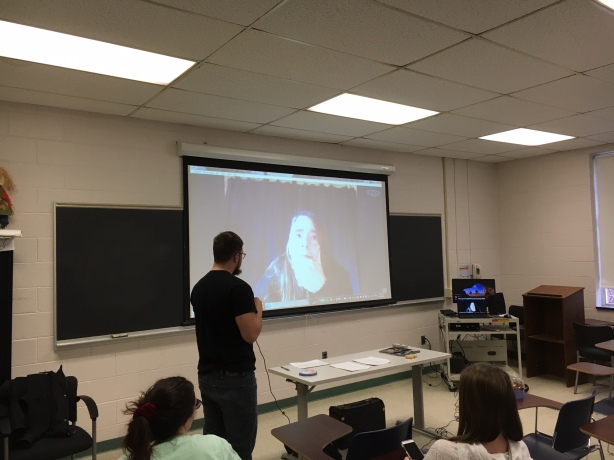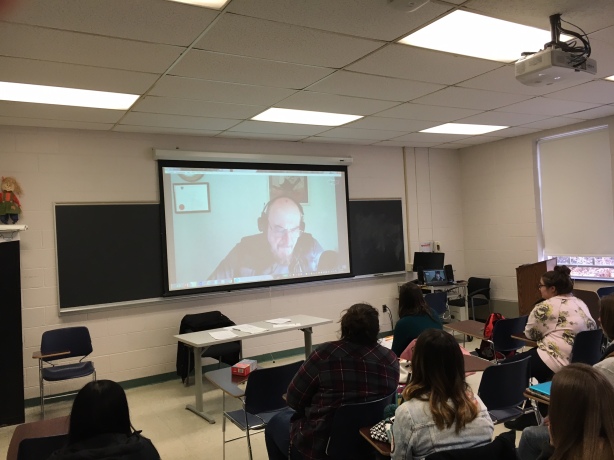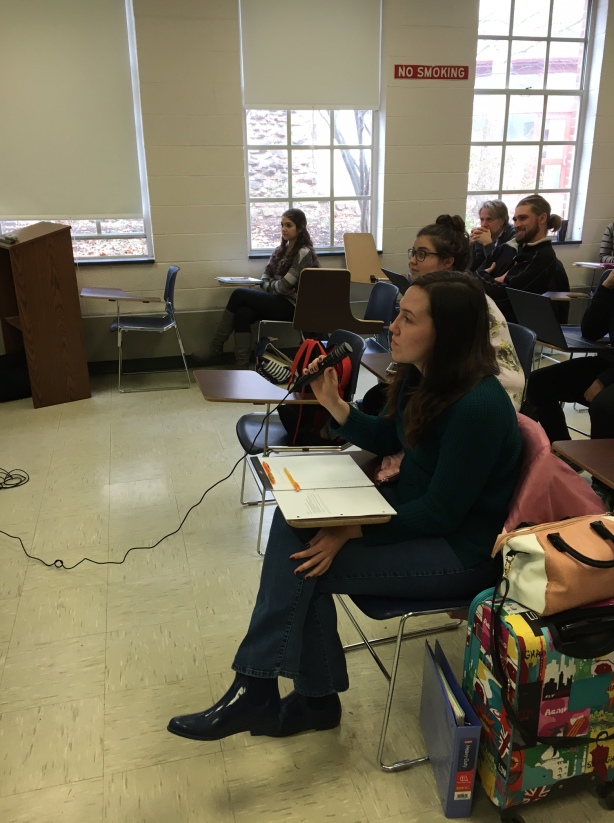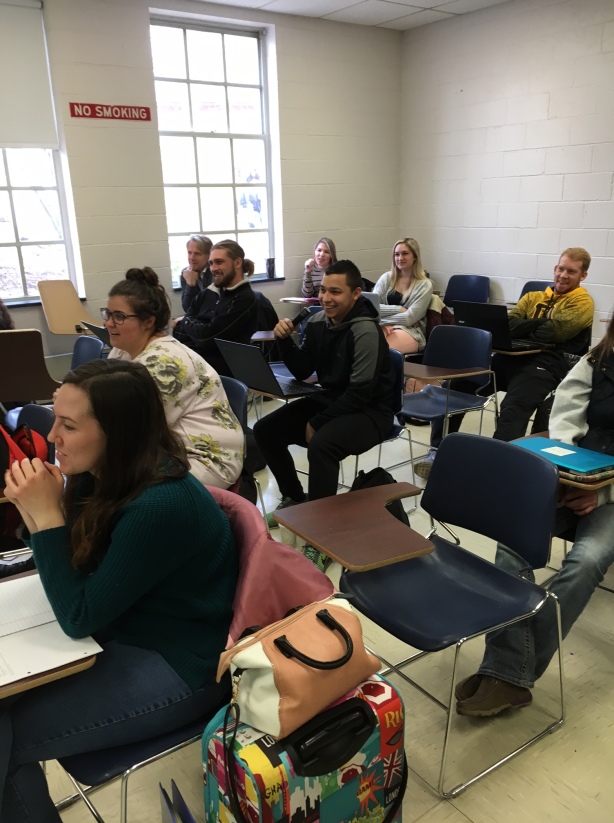So last Spring (2017), I put together a course on “Classic Rock,” which covered the 1963-73 era. Since apparently it went so well, my boss at Del Val decided to expand it to a full three credits to cover the entirety of rock n roll history. I figure I’d begin in the 1920s with early recorded blues and country and move it forward until the 1990s. I think after that rock n roll as we know it ceased to become a major cultural force. (And no, I’m not one of those old people who talks about how much better things were “back then.” It’s just that rock n roll used to be a major cultural rallying point for young people. Nowadays, it’s around, but it doesn’t drive or at least participate in culture the way it used to.)
Putting it together, I decided to focus on one era or genre each week…like one week we’ll do 1950s rock and one week will be British post-punk. Mondays will be lecture-oriented, to provide context to the students for each area we cover. Wednesdays will be entirely discussion, where the students get to talk about songs they were assigned to listen to and write about for that week.
Given that I’ve been writing about music for quite some time and have made a few contacts, the course will also feature guest speakers interacting with the students via Skype. Two of the speakers will visit us in person. To see more details about the course, a syllabus will follow. I will post an update each week.
Course Syllabus: Critical Issues in American History
(i.e., Rock n Roll history)
Delaware Valley University
(LA 4116, Section 201)
Spring 2018
Classroom: Feldman 102
Meeting Times: M/W 12:15 – 1:30 pm
| Instructor: Stephen Tow |
Phone: xxx-xxx-xxxx (cell) |
| Email: xxx@xxxx.com.
|
Office Hours: T/R, 11 am – Noon (#Pub); and by appointment |
Text: None! I will provide notes for you in class. That should make you happy.
Course Description: This course is a combination music appreciation and music history class. We’ll begin with pre-World War II blues and country and work our way through the many varied eras of rock n roll up through the early ’90s.
Course Objective: I want you to understand and appreciate the context of the music in addition to just learning about its history. My ultimate goal is to help set you on a lifetime of exploring and discovering music. Most of us get to a certain age, maybe start a family, and continue to listen to the same music we first heard in high school. The new stuff is “terrible,” and “things were so much better back then.” Trust me, you will be tempted to fall into this trap. Don’t do it! There will always be talented people creating incredible music. It may be harder to find, but it’ll be out there. And I don’t care where you end up musically. For example, if because of this course, you get into Ornette Coleman and Miles Davis, then I’ve done my job.
Evaluation:
- Class attendance/participation (30%)
- Song reactions (55%)
- Guest speaker questions (15%)
- Class attendance/participation
This is an upper-level course. That means you will be expected to show up prepared and motivated to discuss each week’s topics. Your consistent attendance and participation are an easy way to get a free 30% of the grade.
Each week you will receive a list of songs to listen and offer your reactions to. You will be expected to offer insightful analysis beyond, “I liked it” or “It sucked.” Further direction will be provided with these assignments up on Blackboard.
For the guest speakers, you are expected to have at least five questions prepared to ask them. They must be thoughtful. In other words, you have to go beyond queries like “Where were you born?” which anyone can Google. You will be required to email your questions to xxx@xxxx.com by the morning of the relevant speaker’s class appearance. In addition, I will ask you to listen to certain songs before each guest speaking date. The song lists are on Blackboard.
The following musicians have agreed to chat with us (in order of appearance):
Ian Anderson, Jethro Tull
Ian is a founding member and the visionary behind Jethro Tull, formed in 1968 in London. Initially part of the late ’60s London blues boom, Tull quickly transitioned into what would become their signature sound: combining elements of British folk music with progressive rock. Ian’s distinctive vocals, flute playing, and flamboyant performances would make Tull a unique voice in rock n roll’s annals.
Chad Channing, Nirvana
Chad was Nirvana’s first “real” drummer, when he joined the band in 1988. He played their first Seattle show, in April 1988, to about 10 people at the Central Tavern. Chad toured with the band in America and Europe and is featured on Nirvana’s first album, Bleach, which came out in 1989. He also played on some of the demos for Nevermind, but left the band and was replaced by Dave Grohl for the final sessions.
Since Nirvana, Chad has worked on a number of projects including two albums by Before Cars, in which he plays a bunch of instruments on. Mostly he sings and plays guitar. Before Cars sounds nothing like Nirvana…Chad terms it “alternative folk.” Before Cars’ second record, How We Run, was released in 2014, and is a classic (in my opinion.)
Roger McGuinn, the Byrds
Roger is the legendary founding member of the Byrds, who helped create the Southern California folk/rock sound of the ’60s, featuring his distinctive 12-string Rickenbacker guitar. The Byrds also brought country music back into rock with their 1968 effort, Sweetheart of the Rodeo, beating out their contemporaries Flying Burrito Brothers and Eagles.
Terry Marshall, Marshall Amplification
Terry, along with his parents, a few engineers, and a handful of guitar players (Pete Townshend of the Who, Ritchie Blackmore of Deep Purple, and Eric Clapton) started the Marshall amplification company out of a small instrument shop in West London in the early 1960s. Prior to Marshall’s ascent, the only amps available for rock guitarists came from the Vox Company of England or America’s Fender. The Voxes, (you see them in early Beatles and Stones set-ups) were not powerful enough for the increasingly larger venues and the Fenders were too expensive.
So the Marshalls set about creating an inexpensive amplifier, using the musicians as guides for the sounds they wanted. Because the Marshall amps were musician driven, they became increasingly popular. By the latter 1960s, everyone from the Who, Led Zeppelin, and the Jimi Hendrix Experience were using them and they became the standard bearer and the sound of rock n roll.
Judy Dyble, Fairport Convention
Judy was the original lead singer for Fairport Convention, a band formed in London in 1967. Initially labeled the “British Jefferson Airplane” (Judy hates that description, by the way), the band quickly displayed its appetite for musical creativity, eventually becoming pioneers for combining traditional English music with contemporary rock.
In 1969, Judy teamed up with Them’s Jackie McAuley (Them’s front man was Van Morrison) to form Trader Horne, which released one record, Morning Way, in 1970. Despite that band’s brief existence, the audience was vast. Led Zeppelin’s Robert Plant counted himself a fan.
Judy recently embarked on a solo career and continues to make music to this day.
Lenny Kaye, Patti Smith Group
The Patti Smith Group was an early pioneer of the New York punk rock scene. Lenny’s guitar work perfectly juxtaposed with Smith’s poetic lyrics. Beyond that, Lenny has been a key figure in a number of areas including production and music journalism. He also compiled Nuggets, the seminal sampler record of 1960s garage rock and psychedelia. Since he lives fairly close by, Lenny will visit us in person. He is a one-person rock encyclopedia. You had better appreciate him. No pressure, though.
Rob Morgan, the Squirrels
Who are the Squirrels, you might ask? To understand that Seattle band, you must begin with Rob Morgan. And before we go any further, let me share a little story about Rob with you.
A few years back, I took my wife and daughter to Seattle for vacation. We met up with Rob for breakfast at a local diner. The ladies got their own table, so Rob and I could talk about Seattle music. After breakfast, we all met outside and started to chat. I braced myself as my two worlds were about to collide: family man world vs. Seattle punk rock world.
My daughter, who was 11 at the time, looked up at Rob and said, “We have a dog. She’s a black lab named Coco.” “I’m afraid of dogs,” Rob deadpanned, “but I like tarantulas.” That prompted a look of disbelief from the ladies.
Rob’s band, the Squirrels, is indescribable. They are a comedy mash-up punk rock group. What other band in the world would think of combining the lyrics of “Black Sabbath” with the music of “Silent Night?” They also put out a parody of the Pink Floyd classic album The Dark Side of the Moon called The Not-So Bright Side of the Moon. Rob is opinionated, crotchety, brilliant, and funny as hell. He, along with a few other self-described weirdos, created the Seattle punk rock scene in the late ’70s. During my Seattle book launch in 2011, he was included as part of a panel of musicians at a local bookstore. He had the entire audience, including the bookstore rep, in stiches as he stole the show.
Kevin Whitworth, Love Battery
Love Battery is one of the best Seattle grunge era bands. Unlike their peers, the band introduced melodic psychedelia into the mix. Their 1992 Sub Pop album, Dayglo, is a classic. Love Battery features the swirling twin guitar attack of Kevin and Ron Rudzitis.
Rogers Stevens, Blind Melon
Rogers is a founding member of Blind Melon, who made a name for themselves during the early ’90s alternative explosion. Instead of following the sludgy riffs of Soundgarden and Alice in Chains, however, Blind Melon featured a kind of a hippie aesthetic, sort of a groovier version of Led Zeppelin. The band’s first self-titled record, released in 1992, became enormous on the strength of the classic “No Rain,” although the rest of the record sounds nothing like it. The band fell apart after lead singer Shannon Hoon’s 1995 death, and Stevens decided he’d had enough of the music business. He attended college at Delaware County Community College (aka Delco to us locals), then Temple, then Penn Law School. He is now a labor and employment attorney in Philadelphia. Rogers will also visit us in person.
- Grade distribution (as per University grade policy)
A = 93-100; A- = 90-92; B+ = 87-89; B = 83-86; B- = 80-82; C+ = 77-79; C = 73-76; C- = 70-72; D+ = 67-69; D = 63-66; D- = 60-62; F = 59 or below.
I do encourage you to see me with any questions you may have. Please don’t hesitate to call or email me with questions.
Class Schedule
| Week |
Class Topic |
Assignment |
| |
|
|
| 1/22 |
Introduction; roots, electric blues |
SR 1 |
| 1/29 |
1950s rock and rockabilly
Guest speaker: Ian Anderson, Jethro Tull (January 29) |
SR 2 |
| 2/5 |
The Beatles |
SR 3 |
| 2/12 |
The Stones and the British Invasion
Guest speaker: Chad Channing, Nirvana (February 12) |
SR 4 |
| 2/19 |
Bob Dylan, Motown and Stax Records
Guest speaker: Roger McGuinn, the Byrds (February 21) |
SR 5 |
| 2/26 |
San Francisco and Los Angeles |
SR 6 |
| 3/5 |
Heavy blues and early metal
Guest speaker: Terry Marshall, Marshall Amplification Company (March 7) |
SR 7 |
| 3/12 |
Spring Break, no classes |
|
| 3/19 |
Prog rock, British folk/rock
Guest speaker: Judy Dyble, Fairport Convention (March 21) |
SR 8 |
| 3/26
|
Glam and punk rock
Guest speaker (in person): Lenny Kaye, Patti Smith Group
(March 26) |
SR 9 |
| 4/2 |
Seventies mainstream |
SR 10 |
| 4/9 |
New wave and post-punk
Guest speaker: Rob Morgan, Squirrels
(April 9) |
SR 11 |
| 4/16 |
Hardcore punk, Eighties Mainstream, Paisley Underground |
SR 12 |
| 4/23 |
Eighties underground
Guest speakers: Kevin Whitworth, Love Battery (April 23); Rogers Stevens (in person), Blind Melon
(April 25) |
SR 13 |
| |
4/30 |
Nineties alternative explosion |
SR 14 |
| |
5/7 |
Wrap-up |
|
|
|
|
|
Artists We Will Cover
Roots and electric blues
Charley Patton, Robert Johnson, Memphis Minnie, Leadbelly, Big Bill Broonzy, Jimmie Rodgers, Hank Williams, Muddy Waters, Howlin’ Wolf, Sonny Boy Williamson II, Sister Rosetta Tharpe, Big Mama Thornton
1950s rock and rockabilly
Jackie Brenston, Elvis Presley, Jerry Lee Lewis, Little Richard, Chuck Berry, Buddy Holly, Fats Domino, Gene Vincent, Eddie Cochran, Johnny Cash
The Beatles
The Rolling Stones and the British Invasion
Rolling Stones, Who, Yardbirds, Kinks, Small Faces, Animals, Pretty Things
Bob Dylan, Motown and Stax
Bob Dylan, Temptations, Diana Ross & the Supremes, Smokey Robinson, Marvin Gaye, Stevie Wonder, Jackson 5, Booker T and the MGs, Otis Redding
San Francisco and Los Angeles
13th Floor Elevators, Jefferson Airplane, Grateful Dead, Janis Joplin, Quicksilver Messenger Service, Moby Grape, Buffalo Springfield, Byrds, Neil Young, Crosby, Stills, Nash and Sometimes Young, Flying Burrito Brothers, Beach Boys, Association, Love
Prog Rock and British Folk Rock
Moody Blues, King Crimson, Yes, Jethro Tull, ELP, Genesis, Rush, Renaissance, Fairport Convention, Pentangle
Heavy Blues, Early Metal
Jimi Hendrix, Free, Led Zeppelin, Faces, Humble Pie, Fleetwood Mac, Black Sabbath, Deep Purple
Glam Rock/Punk Rock
David Bowie, T. Rex, Alice Cooper, Queen, Stooges, Velvet Underground, MC 5, Patti Smith Group, Television, Ramones, Talking Heads, Sex Pistols, Clash
Seventies Mainstream
Steely Dan, Eagles, Journey, Van Halen, Tom Petty, Bruce Springsteen, Boston, Pink Floyd, Fleetwood Mac
New Wave/Post-Punk
Cars, Elvis Costello, Joe Jackson, Gang of Four, Joy Division, Echo & the Bunnymen, Cure
Hardcore Punk/Eighties Mainstream/Paisley Underground
Bad Brains, Minor Threat, Black Flag, Minutemen, Dead Kennedys, Police, Dire Straits, Prince, U2, Rain Parade, Bangles, Dream Syndicate
Eighties Underground
Sonic Youth, Husker Du, Replacements, R.E.M., Big Black, Scratch Acid, Pixies, Butthole Surfers, U-Men
Nineties Alternative Explosion
Mudhoney, Nirvana, Soundgarden, Pearl Jam, Alice in Chains, Love Battery, Young Fresh Fellows, Stone Temple Pilots, Blind Melon
